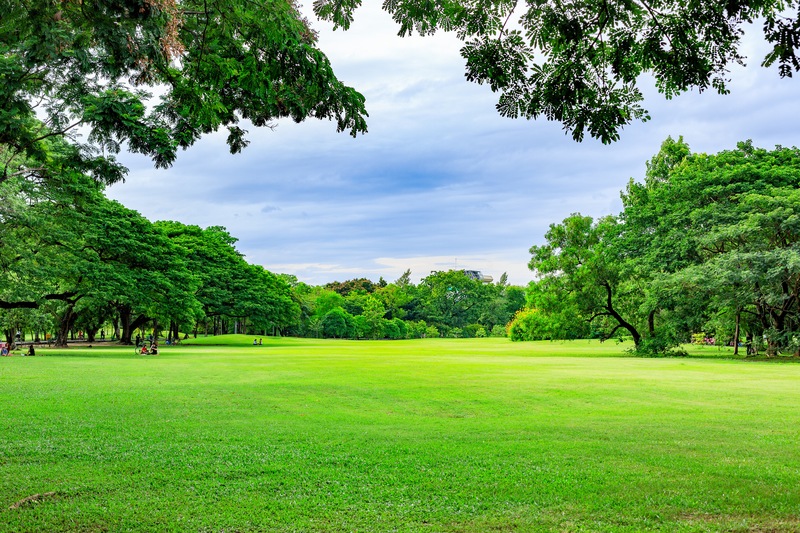
Nothing embodies a healthy landscape quite like strong, beautiful, rich-green grass. It’s the first thing you and your visitors see upon arrival, the test that conveys not only the beauty of the lawn but the very personality of the business that calls it “home.”
Grass can do a lot—but how does it maintain that lush green, healthy hue? As it turns out, there are several key components that point to healthy grass. In today’s blog, read on as we explore five of them.
Healthy, limited amounts of fertilizer
As is the case with flowers and other types of plants, the temptation to over-fertilize can be tempting when it comes to your lawn. But in reality, your grass might not need quite as much as you think—in fact, an overage of nitrogen fertilizer can seep into the ground and affect the ecosystem’s native freshwater aquifer. Help promote the water’s health, as well as that of your lawn, by using fertilizer as a sort of building block for grass that’s already in the process of growing.
Careful scheduling
Speaking of scheduling—grass goes through natural stages of growth and non-growth, or dormancy. These stages are determined by weather, time of year, moisture (or lack thereof) and more. Knowing how to recognize when the growth slows or comes to a stop can help you and your landscaper decide when to fertilize, water, or simply let the grass go through its dormancy.
Smart species choice
The grass you use to form your commercial landscape is a big decision in itself since each local species is favored for a different reason. Certain dwarf forms of St. Augustinegrass, for example, can do well without the same abundance of sunlight its counterparts thrive on. If you anticipate seeing lots of use on your grass (i.e. it’s not just for show but for play, foot traffic, etc.), Zoysiagrasses are likely to stand up well to the action. Still, other species are known for their lax fertilizer needs, others for their ability to thrive in a specific environment (i.e. North or South Florida). Get to know these grasses, and work with your landscape team to find the species (or combination of species) that’s sure to work best.
Ideal height
As you can see, each type of grass has a unique set of characteristics—and that includes an ideal height, too. For Bahiagrass, that’s between three and four inches; for Centipedegrass, less than two-and-a-half. Mowing in accordance with that ideal height will help your grass photosynthesize (giving it that beautiful green shade), as well as outlast seasons of drought.
Longevity
Finally, when grass is healthy and well-cared for, it lasts long and serves more than one initial purpose. For example, grass clippings can be used as nutrient-rich compost or mulch, tossed into planting beds and other areas to promote growth after being mowed.
There’s more to grass than meets the eye—this surprisingly complex plant comes in many shapes, sizes and varieties, each with its own preferred method of care. Brush up on the needs of your own landscape’s grass or call Duval Landscape today to get a better idea of what you need… and how we can help.